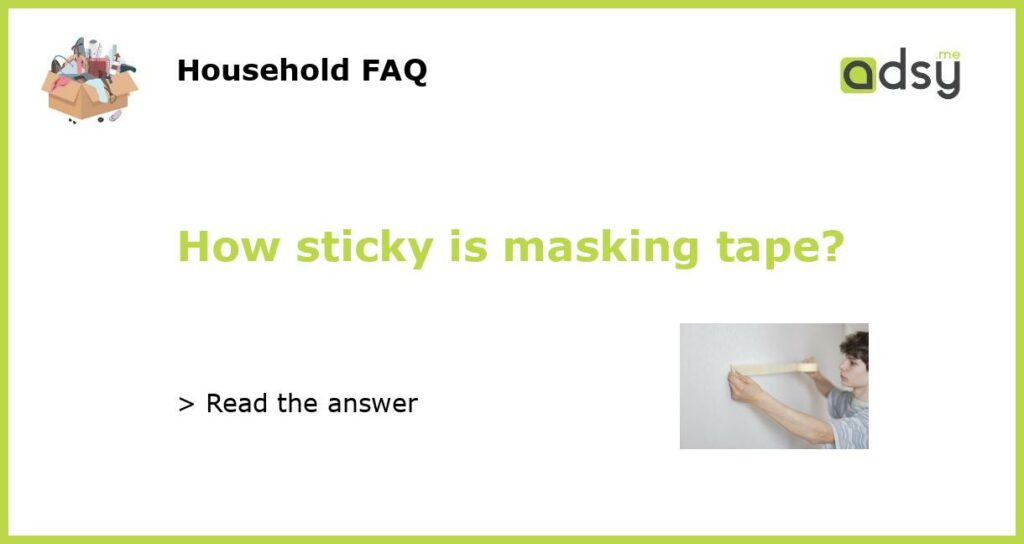What is masking tape?
Masking tape is a type of pressure-sensitive adhesive tape made with a thin and easy-to-tear paper or plastic backing. It is commonly used in painting, carpentry, and other DIY projects to temporarily hold materials in place, protect surfaces from paint or other liquids, and create straight lines or patterns. The tape adhesive is not too strong, which allows for easy removal without damaging the surface.
How sticky is masking tape?
The level of stickiness of a masking tape depends on its intended use and the brand. Generally, masking tapes have a medium level of adhesion that is strong enough to hold materials in place but not too strong to damage the surface when removed. However, there are variations of masking tape with different levels of adhesion, such as low-tack, medium-tack, and high-tack tapes, which provide stronger or weaker holding power depending on the project needs. The stickiness of a masking tape can also be affected by environmental factors such as temperature, humidity, and surface type.
How to choose the right masking tape
Choosing the right masking tape for your project can help you achieve the desired results without any complications. When selecting a masking tape, consider the following factors:
- Adhesion type: Depending on whether you need to hold delicate or rough materials, you can choose between low-tack, medium-tack, or high-tack adhesion types.
- Backing type: Masking tapes come in different backing materials, such as paper or plastic, which affect the thickness, strength, and durability of the tape.
- Width and length: Make sure to choose a tape that fits your project needs in terms of coverage area and tape usage.
- Surface type: The surface where you will apply the masking tape can affect its stickiness, so make sure to choose a tape that can adhere well to smooth, rough, or curved surfaces.
- Price: Different masking tapes have different levels of quality and price, so choose one that fits your budget and expectations.
How to use masking tape effectively
Using masking tape effectively can help you achieve the best results in your project and avoid common issues such as bleeding, tearing, or residue. Here are some tips for using masking tape effectively:
- Clean the surface: Make sure to clean the surface where you will apply the masking tape to remove any dirt, dust, or oils that can affect its stickiness.
- Avoid stretching: Do not stretch the masking tape when applying it, as this can cause it to tear, curl or fail to adhere properly.
- Remove at an angle: When removing the masking tape, do it at a 45-degree angle to avoid tearing and pulling the surface.
- Avoid overuse: Do not leave the masking tape for too long, as this can cause it to become harder to remove and leave residue.
- Test before use: Before applying the masking tape to the final surface, test it on a small area first to check its stickiness and compatibility.






